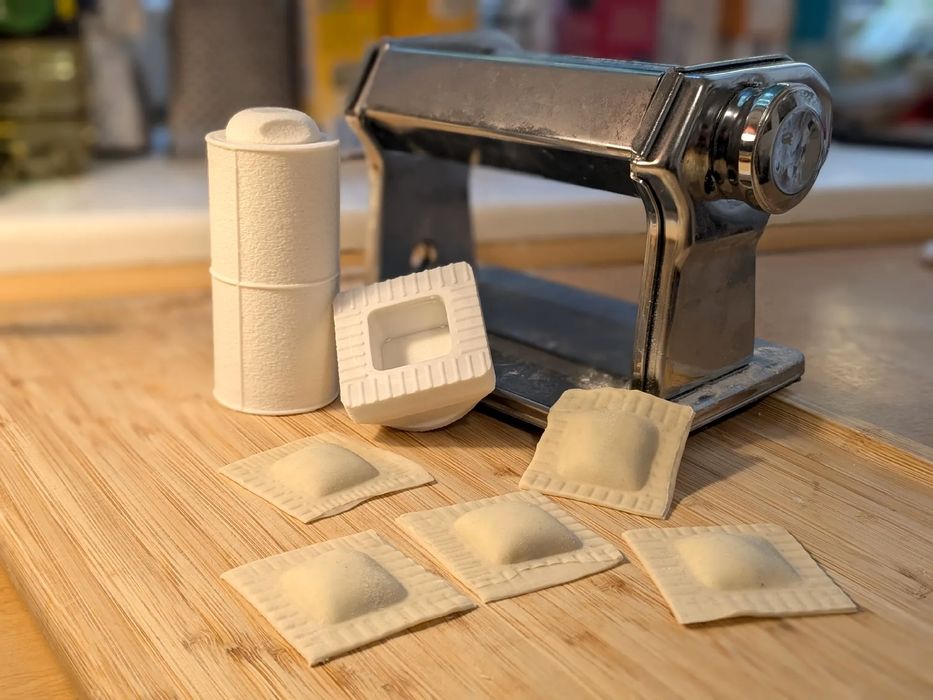
This week’s selection is the Ravioli Roller and Stamp by Printables contributor Daniel Black.
This is exactly what it seems to be: a kitchen accessory that can dramatically speed up production of ravioli, which can be pretty tedious if you’re making a lot of them.
Black explains:
“I’ve designed some kitchen helpers to make ravioli.
I’ve been making homemade ravioli for years and they cut the time I need in half and prevent me from making a mess.”
Very good. But how does it work? It’s a simple process of marking, filling and stamping the pasta:
- Roll out your the dough with your pasta machine
- Use the roller to mark the ravioli shape
- Fill one half with the filling of your choice
- Flip the bottom half of the dough and cut it into pieces
- Use the stamp in a rolling motion. Start with the side where the fold it. Then roll it down flat. That will remove any air in the raviolis and they won’t burst
Ah, but you are now concerned: is this item food safe? The 3D printed plastic will be in contact with the pasta, possibly transferred nasty chemicals or bacteria that have been hiding in between the layers of the roller. What does Black have to say about that?
The answer is unbelievably simple: wrap the two parts in plastic wrap before using them.
I am astonished nobody has done this before, as this is the first time I’ve seen this approach to provide temporary food safety for 3D printed kitchen tools.
Using temporary plastic wrap is actually common in kitchens. For example, it’s frequently used to help tightly wrap sushi rolls. This application is similar, but making ravioli — with 3D printed tools.
Is that all there is to it? Not exactly. Black explains in some detail the need for precisely prepared dough, otherwise there could be ravioli-making problems later. On the Printables page you’ll find detailed instructions for preparing the dough to be ideal for ravioli.
Black provides a standard roller and stamp, but also a variation that has a fuzzy skin. This provides interesting texture on the ravioli. That’s something you never see in ravioli, so it could be a surprise to your hungry guests.
This is a very well-described project that’s not only easy to print, but produces real, edible results.
Via Printables
